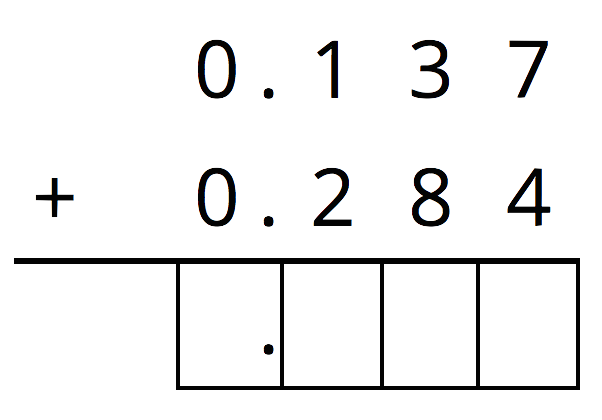Lesson 14
Using Diagrams to Represent Addition and Subtraction
Problem 1
Here are diagrams that represent 0.137 and 0.284.

- Use the diagram to find the value of \(0.137 + 0.284\). Explain your reasoning.
-
Calculate the sum vertically.

- How was your reasoning about \(0.137 + 0.284\) the same with the two methods? How was it different?
Problem 2
For the first two problems, circle the vertical calculation where digits of the same kind are lined up. Then, finish the calculation and find the sum. For the last two problems, find the sum using vertical calculation.
-
\(3.25+1\)

-
\(0.5+1.15\)

-
\(10.6+ 1.7\)
- \(123+0.2\)
Problem 3
Here is a base-ten diagram that represents 1.13. Use the diagram to find \(1.13 - 0.46\).
Explain or show your reasoning.

Problem 4
Complete the calculations so that each shows the correct difference.

Problem 5
A rectangular prism measures \(7\frac{1}{2}\) cm by 12 cm by \(15\frac{1}{2}\) cm.
- Calculate the number of cubes with edge length \(\frac{1}{2}\) cm that fit in this prism.
- What is the volume of the prism in \(\text{cm}^3\)? Show your reasoning. If you are stuck, think about how many cubes with \(\frac12\)-cm edge lengths fit into \(1\text{ cm}^3\).
Problem 6
At a constant speed, a car travels 75 miles in 60 minutes. How far does the car travel in 18 minutes? If you get stuck, consider using the table.
| minutes | distance in miles |
|---|---|
| 60 | 75 |
| 6 | |
| 18 |